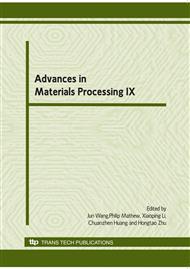p.602
p.608
p.614
p.620
p.626
p.631
p.639
p.645
p.652
Evaluation of Novel Approach on Delamination Factor after Drilling Composite Laminates
Abstract:
Drilling is the most economic and convenient operation of secondary machining for hole making of fiber-reinforced materials owing to the need for structure joining. Delamination is commonly recognized as a major defect after drilling composite materials. In general, the delamination is an irregular shape and size, containing long and fine breaks and cracks at the exit of the drilled hole, especially in the drilling of carbon fiber-reinforced plastic (CFRP). The conventional delamination factor ( ) is not appropriated to characterize the damage area because the shape of the delamination after drilled CFRP is not a regular representation of the damage magnitude. In this paper, a novel approach of the equivalent delamination factor ( ) is proposed and compared with the adjusted delamination factor ( ) and the conventional delamination factor ( ). The experimental results show the obtained is considered suitable for characterizing delamination at the exit of a hole after drilling composite materials.
Info:
Periodical:
Pages:
626-630
Citation:
Online since:
June 2010
Authors:
Price:
Сopyright:
© 2010 Trans Tech Publications Ltd. All Rights Reserved
Share:
Citation:


